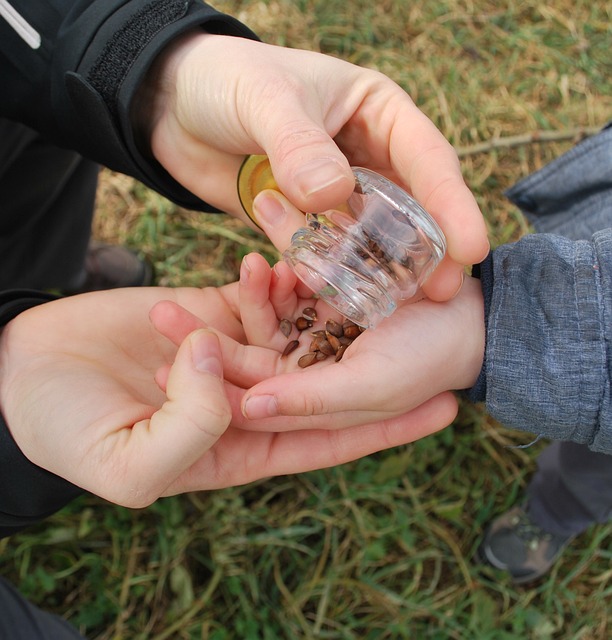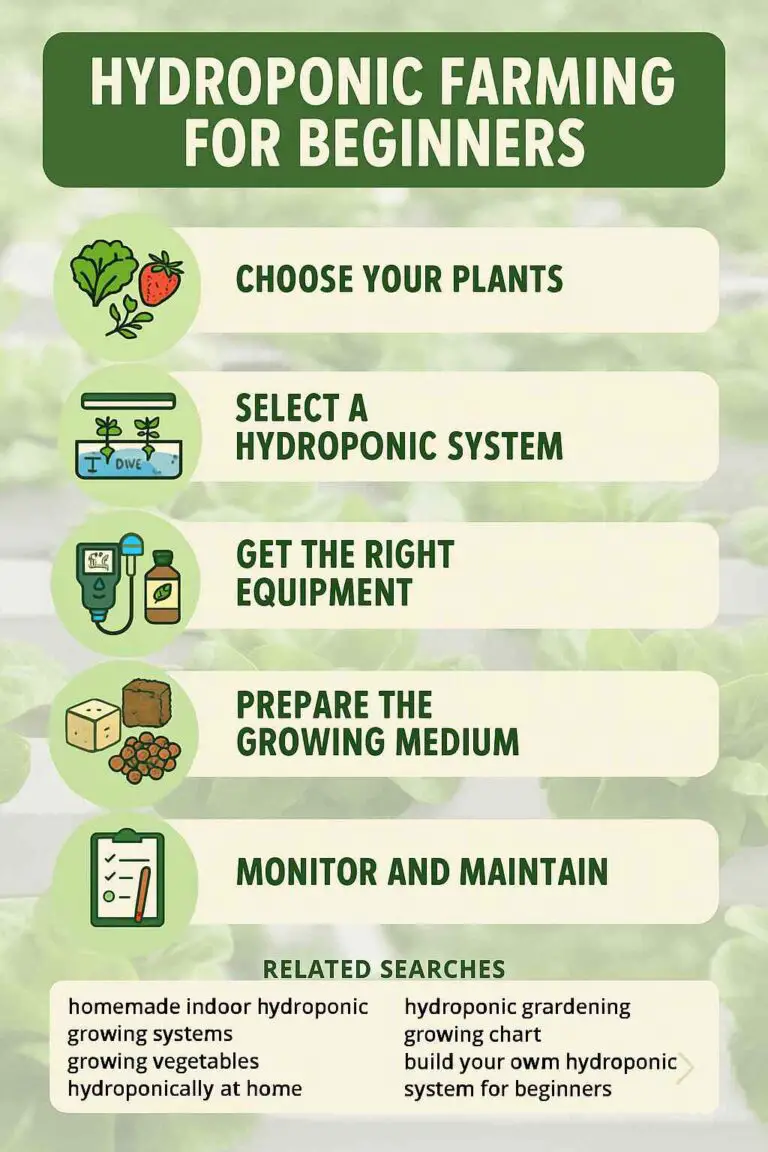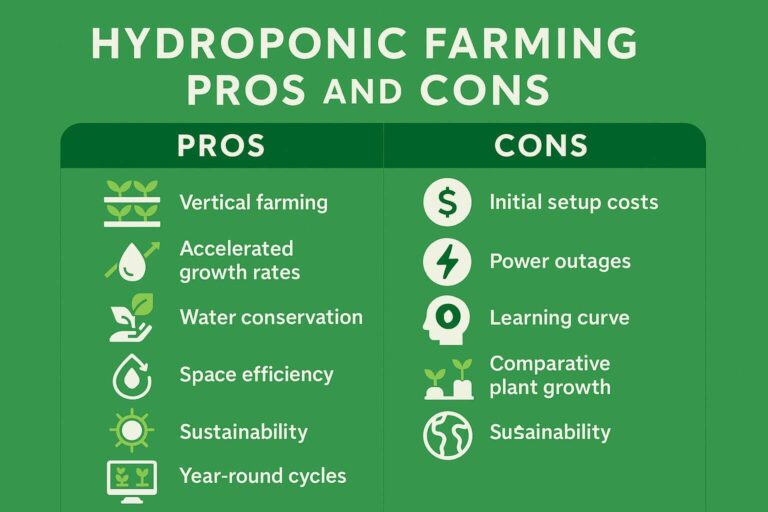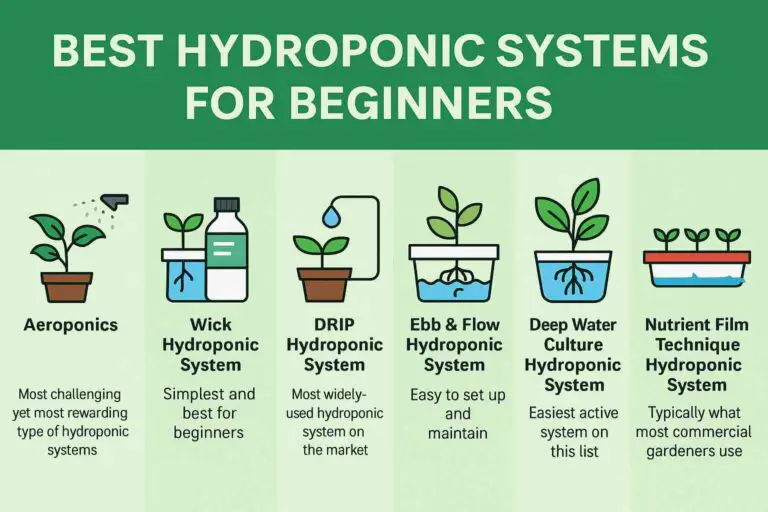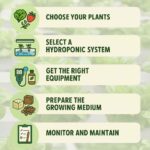Have you ever wondered how long you can store seeds in the freezer? I was curious about this too, so I decided to dig deep and share my findings with you! Seed storage is a crucial aspect of gardening, and freezing seeds can be a game-changer. Not only does it preserve their viability, but it also protects them from pests and extends their shelf life.
Seeds can last significantly longer when stored in the freezer compared to room temperature. While individual results may vary, most vegetable seeds can remain viable for up to 5 years or more, while flower seeds typically retain viability for 2-3 years, and herb seeds for about 3-4 years. The cold temperatures in the freezer slow down the natural deterioration of seeds, preserving their vitality and increasing the chances of successful germination when planted. However, it’s important to properly prepare the seeds by ensuring they are dry and using moisture-resistant, airtight packaging. Factors such as seed quality, specific variety, and storage conditions can also impact seed longevity. Regularly testing seed viability and practicing proper storage techniques, including seed rotation, can help maximize the lifespan of frozen seeds.
In this article, I’ll explore everything you need to know about storing seeds in the freezer. So, let’s dive in and unlock the secrets of seed preservation!
Why Freeze Seeds?
You might be wondering why freezing seeds is beneficial when it comes to seed storage. Well, let me enlighten you on the numerous advantages it offers.
- Preservation of Viability: Seeds are living organisms, and over time, their viability naturally declines. Freezing seeds can slow down this process significantly. The cold temperatures in the freezer create a dormant state, preserving the seeds’ vitality and increasing the chances of successful germination when you’re ready to plant them.
- Protection against Pests: Insects, mites, and other pests can wreak havoc on stored seeds, rendering them useless. Freezing seeds is an effective way to eliminate or minimize the presence of these pests. The extreme cold temperatures act as a natural deterrent, preventing insects from infesting and damaging your precious seeds.
- Extended Shelf Life: By freezing seeds, you can extend their shelf life beyond what is typically possible with other storage methods. Seeds that might only last a few months or a year at room temperature can potentially remain viable for several years when stored in the freezer. This means you can save and utilize seeds from one growing season to the next, saving money and ensuring a steady supply of seeds.
- Convenience and Flexibility: Freezing seeds allows you to be more flexible with your gardening plans. You can store a wide variety of seeds without worrying about them spoiling quickly. Whether you’re saving seeds from your own garden or collecting rare and heirloom varieties, freezing provides a reliable and convenient option for long-term storage.
- Preservation of Genetic Diversity: Seeds represent a treasure trove of genetic diversity, and by freezing them, you can preserve unique and rare plant varieties. This is especially valuable for heirloom seeds, which may be at risk of disappearing if not properly stored. Freezing helps maintain the integrity of these diverse genetic resources for future generations.
So, if you want to maximize the lifespan of your seeds, protect them from pests, and ensure a robust and diverse garden, freezing is an excellent strategy. Now that you understand the benefits, let’s delve into the details of how to choose the right seeds for freezing and the proper methods for seed preparation and storage.
Choosing the Right Seeds for Freezing
When it comes to freezing seeds, not all varieties are created equal. It’s essential to select the right seeds for optimal results. Here are 5 factors to consider when choosing seeds for freezing:
- High-Quality Seeds: Start with high-quality seeds that are healthy, mature, and free from any signs of disease or damage. Healthy seeds have a better chance of retaining their viability during freezing and germinating successfully when planted.
- Open-Pollinated and Heirloom Varieties: Open-pollinated and heirloom seeds are excellent choices for freezing. These varieties tend to have more stable genetics and are often more adaptable to different growing conditions. Plus, preserving heirloom seeds through freezing helps maintain biodiversity and ensures the continuation of unique plant traits.
- Vegetables, Flowers, and Herbs: The freezer is suitable for a wide range of seeds, including vegetables, flowers, and herbs. Popular choices for freezing include tomatoes, peppers, beans, peas, lettuce, zinnias, marigolds, basil, and cilantro. However, some seeds, such as delicate salad greens or those with high moisture content, may not freeze well and are better stored through alternative methods.
- Non-Hybrid Seeds: Non-hybrid or open-pollinated seeds are preferable for freezing. Hybrid seeds, which result from cross-pollination between different varieties, may not produce offspring with the same characteristics as the parent plant. While frozen hybrid seeds can still be used for planting, the resulting plants may not exhibit the desired traits.
- Seed Age: Fresh seeds generally have higher viability rates. If possible, use seeds that are no more than a few years old for freezing. However, if you have older seeds that are still in good condition, freezing them can help extend their viability.
Remember, every seed is unique, and certain varieties may have specific considerations for freezing. It’s always a good idea to consult seed catalogs, online resources, or experienced gardeners for specific recommendations based on the seeds you wish to preserve.
In the next section, I’ll explore the essential steps for preparing seeds before freezing, ensuring they are in the best possible condition for long-term storage.
Preparing Seeds for Freezing
Properly preparing seeds before freezing is crucial to maximize their viability and ensure successful storage. Follow these steps to get your seeds ready for the freezer:
- Cleaning: Start by cleaning the seeds to remove any debris, chaff, or dried fruit pulp. Gently rub or rinse the seeds in water, being careful not to damage them. For small seeds, you can use a fine sieve or strainer to separate them from larger particles.
- Drying: After cleaning, it’s essential to thoroughly dry the seeds. Spread them out in a single layer on a clean, dry surface such as a paper towel, coffee filter, or fine mesh screen. Allow the seeds to air dry completely in a well-ventilated area. Make sure to avoid direct sunlight, as excessive heat can damage the seeds.
- Avoid Moisture: Moisture is the enemy of seed storage. Ensure that the seeds are completely dry before proceeding to the next step. Even a small amount of residual moisture can lead to mold or rot during freezing.
- Packaging: Once the seeds are dry, it’s time to package them for freezing. Choose appropriate seed storage containers such as small airtight glass jars, plastic bags, or moisture-resistant seed envelopes. It’s crucial to use packaging that will prevent moisture from entering and damaging the seeds. If using plastic bags, squeeze out excess air before sealing to minimize moisture.
- Labeling: Don’t forget to label your seed containers with the seed variety and the date of freezing. This will help you keep track of the seeds and their storage duration. Consider including additional information like the source of the seeds or any specific growing instructions.
- Multiple Seed Packets: If you have multiple seed packets of the same variety, consider dividing them into smaller portions for freezing. This allows you to thaw and use only the amount you need, without exposing the entire batch to potential moisture each time.
- Freezer Placement: Lastly, place the properly packaged seeds in the coldest part of your freezer, such as the back or bottom shelves. The temperature should be consistently below freezing (0°F or -18°C) to maintain the seeds’ viability.
Next, let’s explore the specifics of storing seeds in the freezer and discuss the ideal temperature and humidity conditions for long-term storage.
Storing Seeds in the Freezer
Now that your seeds are clean, dry, and packaged, it’s time to store them in the freezer. Here’s how to ensure optimal conditions for long-term seed storage:
- Temperature: The freezer temperature plays a crucial role in preserving seed viability. Set your freezer to a consistently low temperature, ideally at or below 0°F (-18°C). Avoid frequent temperature fluctuations by keeping the freezer closed as much as possible.
- Moisture Control: Moisture is the enemy of seed storage, even in the freezer. It’s essential to minimize moisture exposure to maintain seed quality. Ensure that your seeds are properly dried before freezing and use moisture-resistant packaging to prevent condensation. Additionally, avoid placing wet items near the seed containers in the freezer.
- Airtight Packaging: The packaging you use should be airtight to prevent the entry of moisture or air. Airtight glass jars with rubber seals, sealed plastic bags, or moisture-resistant seed envelopes are good options. Ensure the containers are well-sealed to maintain the integrity of the seeds during freezing.
- Organize and Label: Keep your seed storage organized by grouping similar seeds together and labeling each container. This will make it easier to locate specific varieties when you need them. Consider using waterproof labels or writing directly on the containers with a permanent marker to ensure the information remains intact.
- Avoid Cross-Contamination: To maintain the purity of each seed variety, avoid storing different seeds in close proximity to the freezer. This prevents any accidental cross-pollination or mixing of seeds.
- Seed Rotation: Just like any food item, seeds have a limited shelf life even in the freezer. To ensure you’re always using the freshest seeds, practice seed rotation. As you acquire new seeds or harvest fresh ones, use the older frozen seeds first. This way, you can maintain a constant supply of viable seeds for planting.
- Backup Storage: It’s always a good idea to have backup storage options for short-term seed storage. Consider keeping a small portion of seeds in a cool, dry, and dark place, like a refrigerator, for easy access when starting your next gardening season. This way, you won’t need to retrieve and expose the entire frozen seed collection to potential moisture each time.
Let’s explore seed viability and how long you can expect different types of seeds to remain viable when stored in the freezer.
Seed Viability and Shelf Life
Understanding seed viability is essential for successful germination and productive gardening. Viability refers to the ability of a seed to germinate and grow into a healthy plant. While freezing seeds can significantly extend their shelf life, it’s important to be aware of the average viability of different seeds. Here are 4 general guidelines:
- Average Viability: Seeds stored in the freezer can remain viable for a significantly longer time compared to seeds stored at room temperature. While individual results may vary, many vegetable seeds can retain their viability for up to 5 years or more when properly frozen. Some flower seeds can remain viable for 2-3 years, while herb seeds may last around 3-4 years. These estimates can vary depending on the specific seed variety, seed quality, and storage conditions.
- Seed Viability Testing: If you’re unsure about the viability of your frozen seeds, you can perform a simple germination test before planting. Take a sample of the seeds and follow the germination instructions specific to each variety. By observing the percentage of seeds that successfully germinate, you can determine the approximate viability of the remaining seeds.
- Factors Affecting Viability: While freezing seeds can greatly prolong their shelf life, certain factors can influence their viability even in the freezer. Moisture and exposure to light can lead to deterioration over time. Therefore, it’s crucial to ensure seeds are properly dried and stored in moisture-resistant packaging. Additionally, temperature fluctuations or frequent thawing and refreezing can reduce seed viability, so try to minimize temperature variations in the freezer.
- Variability between Seed Types: It’s important to note that different seed types have varying shelf lives, even when stored in the freezer. Some seeds, such as lettuce, onion, and parsnip, have shorter viability and may not last as long as other seeds. Conversely, seeds of plants like peppers, tomatoes, and beans tend to have longer viability when frozen. Research and reference seed catalogs or online resources for specific information about the viability of different seed varieties.
Remember, these are general guidelines, and individual seed viability may vary. The quality of the seeds at the time of freezing, the storage conditions, and the specific characteristics of each seed variety can all influence how long they remain viable. By regularly testing seed viability and practicing proper seed storage techniques, you can make the most of your frozen seed collection.
In the next section, we’ll discuss how to test seed viability and what to do if you find that your frozen seeds have low viability.
Testing Seed Viability
Before planting your frozen seeds, it’s a good idea to perform a seed viability test to assess their germination potential. This simple test helps you gauge the viability of your seeds and determine the percentage that is likely to sprout. Here’s how you can conduct a basic seed viability test:
- Seed Sample Selection: Take a representative sample of seeds from your frozen collection. The size of the sample will depend on the quantity of seeds you have, but aim for at least 10 to 20 seeds for an accurate assessment.
- Seed Germination Method: There are various methods you can use to germinate the seeds, but a popular and straightforward option is the paper towel method. Moisten a paper towel or a coffee filter and place the seeds on one half of it. Fold the other half over to cover the seeds.
- Warmth and Moisture: Place the folded paper towel with the seeds in a plastic bag or a covered container to create a humid environment. Keep it in a warm location, ideally between 70°F and 85°F (21°C and 29°C). Avoid exposing the seeds to direct sunlight.
- Observation and Time: Check the seeds regularly, preferably every 2 to 3 days, to monitor germination progress. Be patient, as some seeds may take longer to germinate than others. Depending on the seed variety, you may see sprouting within a week or two.
- Record Results: Once germination occurs, record the number of seeds that have successfully sprouted. Calculate the percentage of seeds that have germinated out of the total sample size. This will give you an estimate of the seed viability.
- Interpreting Results: If a high percentage of seeds sprout, it indicates good viability, and you can confidently plant the rest of the seeds from that batch. However, if the germination rate is low, it may be a sign that the seeds have lower viability. In such cases, you might consider adjusting planting density or obtaining fresh seeds if necessary.
Seed viability tests provide an estimate of the viability of your frozen seeds but may not guarantee the exact germination rate in your garden. Factors such as environmental conditions and seed handling can affect actual germination outcomes. However, conducting these tests gives you valuable insights into the potential success of your seeds.
In the next section, I’ll explore the process of thawing frozen seeds and the recommended methods for planting them to ensure their successful growth.
Thawing and Planting Frozen Seeds
Once you’re ready to plant your frozen seeds, it’s important to thaw them properly to ensure their viability and successful growth. Follow these steps to thaw and plant your frozen seeds effectively:
- Remove from Freezer: Take the desired amount of seeds you need from the freezer. Avoid thawing the entire seed collection if you don’t plan to use all of them at once. This helps minimize potential moisture exposure to the remaining frozen seeds.
- Thawing Process: Place the frozen seeds in a cool, dry location, away from direct sunlight. Allow them to gradually come to room temperature. This can be achieved by leaving them on a countertop or in a cupboard for a few hours or overnight.
- Moisture Check: Before planting, ensure that the thawed seeds are moisture-free. Gently touch them to make sure they are dry and not clumped together. If any seeds appear moist, allow them to air dry completely before proceeding.
- Planting Guidelines: Follow the specific planting guidelines for each seed variety. Some seeds may require soaking or scarification (scratching the seed coat) before planting to enhance germination. Consult seed packets, gardening books, or reliable online sources for detailed instructions on planting depth, spacing, and other specific requirements.
- Seed Treatment Options: Depending on the seed variety, you may choose to pre-treat the seeds before planting. This can involve techniques such as stratification (exposing seeds to cold temperatures) or soaking in water or a seed-starting solution. These treatments can help enhance germination rates, particularly for certain flower or tree seeds.
- Planting Conditions: Prepare the planting area according to the specific needs of the seeds. Ensure the soil is well-drained, fertile, and suitable for the particular plant variety. Follow recommended sunlight requirements, watering practices, and any other considerations mentioned for optimal growth.
- Keep Records: Maintain a gardening journal or record the planting dates, seed varieties, and any additional information that may be helpful for future reference. This allows you to track the success of the thawed seeds and make adjustments if needed.
Additional Tips for Successful Seed Storage
While freezing seeds is an excellent long-term storage option, there are additional tips you can follow to ensure the longevity and viability of your seeds. Consider these recommendations:
- Optimal Harvesting Time: Harvest seeds from your plants at the optimal time to maximize their viability. Allow the seeds to fully mature and dry on the plant before collecting them. This ensures that they have reached their full potential for successful germination and storage.
- Proper Seed Labeling: Accurate labeling is essential for easy identification of seed varieties and tracking their storage duration. Include the seed variety, date of collection or purchase, and any other relevant information on your seed packets or containers. This helps you maintain organized and updated seed inventories.
- Dark and Cool Storage: Store your seeds in a cool, dark location. Exposure to light and heat can decrease their viability. A cool, dry basement or a dark drawer in a temperature-controlled room are good options for short-term seed storage before freezing.
- Seed Moisture Content: Before storing seeds, ensure they are completely dry. Excess moisture can lead to mold or premature sprouting, reducing their viability. Use proper drying techniques and allow seeds to air dry thoroughly before packaging and freezing.
- Regular Seed Rotation: Practice seed rotation even within the freezer. As you acquire new seeds or collect fresh ones from your garden, prioritize using the older frozen seeds first. This helps maintain a fresh and viable seed collection, ensuring a constant supply for future planting seasons.
- Keep Seeds Pest-Free: Regularly inspect your stored seeds for signs of pests or insect damage. If you notice any infestation or suspicious activity, discard the affected seeds to prevent the spread of pests. Consider using natural pest control methods, such as diatomaceous earth or airtight containers, to deter pests from accessing your seed storage.
- Share and Exchange Seeds: Engage in seed swapping or seed exchanges with fellow gardeners. This not only promotes biodiversity but also allows you to replenish your seed collection with fresh varieties regularly. Sharing seeds with others helps preserve heirloom varieties and fosters a sense of community among garden enthusiasts.
FAQs about Freezing Seeds
Q: Can I freeze the seeds that I bought from a store?
A: Absolutely! Store-bought seeds can be frozen just like seeds you collect from your garden. Ensure they are dry and properly packaged before placing them in the freezer.
Q: Can I freeze seeds that have already been planted and sprouted?
A: Freezing sprouted seeds is not recommended, as the freezing process can damage delicate sprouts. It’s best to freeze seeds before planting or after they have fully dried.
Q: Should I thaw frozen seeds before planting them?
A: Yes, it’s important to thaw frozen seeds before planting. Allow them to gradually come to room temperature before sowing. Thawed seeds have a better chance of germination than planting them directly from the freezer.
Q: Can I refreeze seeds that have been thawed but not planted?
A: It’s generally not advisable to refreeze seeds that have been thawed. Frequent thawing and refreezing can reduce their viability. Instead, store the remaining seeds in a cool, dry place until you’re ready to plant them.
Q: Are all types of seeds suitable for freezing?
A: While most seeds can be successfully frozen, some delicate or high-moisture seeds may not fare well. Examples include lettuce, salad greens, and certain tropical seeds. Research specific seed varieties or consult reputable sources to determine their suitability for freezing.
Q: Can freezing seeds revive old or non-viable seeds?
A: Freezing cannot revive seeds that are completely non-viable. It can, however, prolong the viability of seeds that are still in good condition. If you have doubts about the viability of old seeds, it’s best to perform a germination test before freezing or planting.
Q: How should I store frozen seeds for long-term viability?
A: Store frozen seeds in airtight, moisture-resistant containers such as glass jars, plastic bags, or seed envelopes. Keep them in the coldest part of your freezer, and label the containers with seed variety and freezing date for easy identification.
Q: Can freezing alter the genetics or traits of hybrid seeds?
A: Freezing does not alter the genetics or traits of hybrid seeds. However, the resulting plants from frozen hybrid seeds may not exhibit the same characteristics as the parent plant due to genetic recombination during cross-pollination.
Q: Can I freeze seeds in regular household freezers?
A: Yes, regular household freezers are suitable for freezing seeds. Just ensure that the temperature remains consistently below freezing (0°F or -18°C) and avoid frequent temperature fluctuations.
Q: Are there any alternative methods for long-term seed storage besides freezing?
A: Yes, alternative methods for long-term seed storage include dry storage in a cool, dark place, or using desiccants like silica gel packets to remove moisture. However, freezing is often considered the most effective method for extending seed viability.
Q: Does freezing seeds affect germination?
A: Freezing seeds can actually improve their germination rates. The cold temperatures help preserve seed viability and protect against pests, increasing the chances of successful germination when planted.
Q: What seeds should not be frozen?
A: While most seeds can be successfully frozen, there are a few exceptions. Delicate or high-moisture seeds, such as lettuce, salad greens, and certain tropical seeds, may not fare well in the freezer. It’s best to research specific seed varieties or consult reputable sources to determine their suitability for freezing.
Conclusion
In conclusion, seeds stored in the freezer can last significantly longer than when stored at room temperature. While individual results may vary, vegetable seeds can remain viable for up to 5 years or more, flower seeds for 2-3 years, and herb seeds for about 3-4 years. The freezing temperatures help slow down the natural deterioration of seeds, preserving their vitality and increasing the chances of successful germination. However, it’s important to note that factors such as seed quality, specific variety, and storage conditions can influence seed longevity. Proper seed preparation, including thorough drying and using moisture-resistant packaging, is essential.
Regularly testing seed viability and practicing seed rotation can help ensure the freshness and viability of your frozen seed collection. Remember to consult specific seed catalogs or resources for detailed information on the viability of different seed varieties. With proper storage techniques and regular testing, you can enjoy the benefits of preserving seeds in the freezer for an extended period, providing a reliable supply for your gardening endeavors.
With these practices in place, you can confidently embark on your gardening journey, knowing that you have a reliable supply of seeds for the seasons to come. Happy gardening and may your frozen seeds bring forth abundant and thriving plants!

